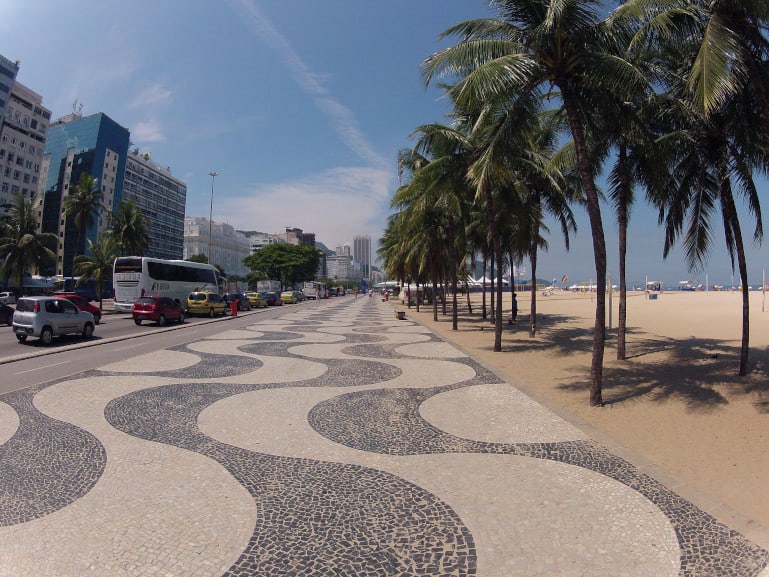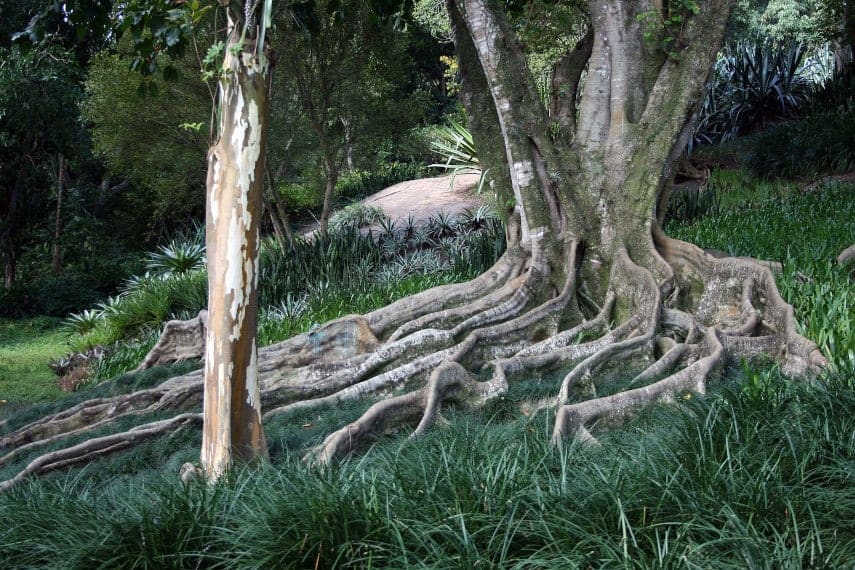How Roberto Burle Marx Elevated Landscape Into Art
For centuries, gardens have attracted a range of creatives coming from different disciplines. The versatility of plants, their arrangements, and bright colors enabled them to express their creativity, and project their utopia.
One of them was Brazilian architect, painter, and naturalist, Roberto Burle Marx, who gained prominence for his impeccable designs of gardens, parks, and public spaces. Throughout his practice, this legendary practitioner explored the significance of landscape in shaping environments used by humans. Marx has made a tremendous contribution to the tropical garden design during the 20th century, while having a special focus on water gardens. Thanks to his efforts, the process of conservation of Brazil's rainforests started.
Revisiting his practice seems more than fitting in the light of environmental issues taking across the globe, especially the deforestation and devastating fires that swiped a significant part of forest across the Amazon.

Becoming Roberto Burle Marx
Roberto Burle Marx was born in São Paulo, in a family of French and German Jewish ancestry. While attending painting classes in Germany, he was inspired by the Botanical Garden in Berlin where he learned much about Brazilian flora. After returning to Brazil in 1930, Marx enrolled the National School of Fine Arts in Rio de Janeiro and started collecting plants. During that time, the circle around him was populated by some of the country's future leaders in architecture and botanists who had a continuous influence on his career.
Burle Marx designed his first landscape for a private residence, the Schwartz house, designed by architects Lucio Costa and Gregori Warchavchik in 1932. This project marked the beginning of a collaboration with Costa who later worked with Oscar Niemeyer, the prolific architect of the Brazilian Pavilion at the New York World's Fair in 1939. A couple of years later, Roberto Burle Marx designed gardens for Niemeyer’s Pampulha complex. By 1937, he gained international acclaim for the epic abstract design of a roof garden for the Ministry of Education building.
In 1949, the architect purchased the Sítio de Santo Antônio da Bica, a grand estate in the Barra de Guaratiba neighborhood on the outskirts of Rio de Janeiro, where he established his garden, nursery, and tropical plant collection. His knowledge of plants was expanded by the botanist Henrique Lahmeyer de Mello Barreto during a series of expeditions into the Brazilian rain forest undertaken with architects and landscape architects to gather plant specimens. In 1955, Roberto Burle Marx founded a landscape studio and a company; he opened a franchise in Caracas in 1956. Commissions came from across the continent throughout Brazil, Argentina, and, Chile, but also from Europe, Africa, and the US. However, most of his work is displayed throughout the city of Rio de Janeiro. Roberto Burle Marx died in 1994, after being active as an artist/garden designer for more than six decades.

The Garden Design Approach
Burle Marx was profoundly influenced by the avant-garde tendencies of the interwar period, especially Cubism and abstraction in general. He embraced experimentation with forms, colors, and shapes while introducing the element of timelessness by bringing the plants into the first plane. Burle Marx’s approach was anti-mimetic, based on Brazilian folk traditions and nature. By not mixing flower colors, using large groups of the same species of mostly native plants, and accentuating their sculptural form, Burle Marx made contemplative environments that are visually captivating and engaging. The character and the behavior of each plant were of his particular interest as well as the effect these had on the whole garden. He focused on the dynamics of walking through a garden, lighting, and reflection in terms of the use of water.
Roberto Burle Marx's entire practice was based on four general design concepts – the fracture of symmetrical patterns in the conception of open spaces, the use of native tropical vegetation as a prime element of design, the colorful treatment of pavements, and the use of free forms in water features. These concepts are best illustrated in his best-known large-scale project of the Copacabana Beach promenade in Rio de Janeiro, where native trees and palms appear in groupings, accentuated with stone mosaics that form a giant abstract painting.

The Legacy of Robert Burle Marx
The domains of Burle Marx are pioneering in terms of modernist architecture and landscape design, but also in environmental terms as he was among the first Brazilians to address deforestation. Thanks to Roberto Burle Marx gardens, the botanical sciences have profited greatly, so it’s no wonder that at least 50 plants are named after him.
This one-of-a-kind artist combined the rational and the lyrical by referring to the omnipresent variability found in nature. The poet of his own life, as Burle Marx described himself, he designed landscapes that are exuberant examples of modern art, while proposing political concerns such as ecology.
In 1985, the architect’s private property was donated to the Brazilian government and was proclaimed a national monument now called Sítio Roberto Burle Marx located in Rio de Janeiro. His grand legacy is a fruitful source of inspiration and is still being explored today. It is not surprising that, in 2021, Burle Marx’s property was inscribed on the UNESCO World Heritage List due to its unique Modernist design and its relevance for environmental and cultural preservation.
Featured image: Sítio Burle Marx, via Pablo Flores
Can We Help?
Have a question or a technical issue? Want to learn more about our services to art dealers? Let us know and you'll hear from us within the next 24 hours.
